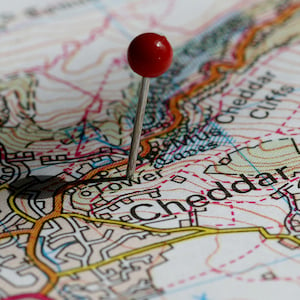- Data Services
- Fraud Prevention
- Solutions
- Resources
- About Us
- Login
- Talk to an expert
- Try us for free
Dec 20, 2013 | 4 min read

 It’s fairly impossible to read about modern email marketing without encountering the term “new buyer’s journey.” Hugh Macfarlane is credited with coining the term “buyer’s journey” in his book “The Leaky Funnel,” published in 2003.
It’s fairly impossible to read about modern email marketing without encountering the term “new buyer’s journey.” Hugh Macfarlane is credited with coining the term “buyer’s journey” in his book “The Leaky Funnel,” published in 2003.
As the title implies, the collapse of the traditional marketing funnel was a critical change caused by information becoming widely available to consumers on the Internet. Before the collapse, prospects were beholden to marketing and sales people to inform their understanding of products and guide them through a buying process that could be controlled through the well-known and predictable stages of the marketing funnel.
The new buyer’s journey is a major disruption, rendering marketing and sales processes that were honed over decades obsolete. Research conducted by the Corporate Executive Board (CEB) led it to pronounce “the end of solution sales.”
CEB research directors in the Harvard Business Review describe how customers are increasingly circumventing sales reps, using publicly available information to diagnose their own needs and turning to procurement departments and purchasing consultants to help them extract the best possible deals from suppliers. For sales, says the CEB authors, “this isn’t just another long, hot summer; it’s wholesale climate change.”
In the new climate, prospects visit many venues and access information from a variety of sources, including corporate web sites, industry sites, product comparison sites, webinars, videos and social media services. Places that prospects visit during their buyer journeys are called touch points.
To win business in this environment, marketing needs to deliver relevant content to prospects at all the key touch points along their journeys. To do this requires an understanding of prospects’ buying patterns and personas, as well as the ability to monitor and deliver on the fly.
In seeking to get a better understanding of the new buyer’s journey, Matthew Sweezey surveyed 400 B2B buyers. He found the B2B buyer’s journey consisted of three main stages:
In most cases, Sweezey says, it is marketing that will handle the first stages of the buyer’s journey by helping the buyer educate himself to a sales-ready state. Once a buyer has a general understanding of the product or service, sales will take over to close the deal. A key point experts emphasize is that the information provided in the initial stages should be educational and not heavy-handed sales pitches.
Email marketers play an important role in nurturing leads and providing content in the form of persuasive messaging, links and invitations for whitepapers, case studies, newsletters, webinars, promotions, special offers, live events and more. This is also where drip campaigns, real-time marketing and behavioral marketing come into play via targeted and personalized messaging in response to user activities.
There is some controversy about when a prospective buyer is ready to engage with vendors and be sold. A CEB survey found buyers have completed 57 percent of their research before they begin contacting vendors. Sirius Decisions put that number at 67 percent. These numbers have led experts to urge marketers to engage prospects during the early stages of their searches if they want to be in the running.
Tony Zambito, however, takes issue with the idea that buyers are not ready to engage vendors early in the journey and warns marketers not to take these numbers as gospel. Megan Heuer of Sirius Decisions agrees. Just because buyers spend time online doesn’t mean sales is not involved at all stages of the buyer’s journey, she says, including the early and late stages.
Hugh Macfarlane sees only one buyer condition as crucial. Even when a buyer shows interest and agrees there is a need, he says, he will often not buy until the pain of inaction is greater than the pain of making the purchase.
Given this range of scenarios, a smart approach for marketers is to have plans and content prepared for all contingencies-early-cycle and late-cycle engagement. Salespeople should assess prospects and not waste valuable time on those who are not going to buy.
When you know where your customers go for information and what they are looking to find, you can target those touch points and deliver appropriately crafted content to persuade them. Thus, mapping your buyer’s journey should be a key part of your strategy.
Sweezey found that research is the key to understanding the buyer’s cycle “because every buyer begins with research.” His survey showed 76 percent of his surveyed buyers begin with a Google search, and Gartner reported 99 percent begin with Google. Knowing the keywords your audience searches for and gearing your content to incorporate and address those keywords is a basic strategy.
There are a number of tools like Touchpoint Dashboard, Kapost, Marketing.AI and Spredfast to help you plan and map out buyer touch points and content delivery schemes. The Sales Benchmark Index also provides a free Buyer Process Map that enables you to chart the decision-making process of your target audience, including the key actions and micro decisions a buyer makes at each phase of the journey.
Want more helpful email marketing strategy advice? Subscribe to the TowerData blog today!
Photo Credit: Tristan Martin